Most traders trade the bearish and bullish engulfing patterns the wrong way.
And why?
They watch them appear in the charts and trade them everywhere.
But the thing is…
You need to have the right approach.
To increase your success rate, it’s essential to trade them in the right places.
Today you’ll learn:
- What is a Bearish Engulfing Pattern
- What is a Bullish Engulfing Pattern
- Why Are Engulfing Patterns Important?
- Mistakes trading Engulfing patterns
- How to trade Engulfing bars (trigger)
- Trading Engulfing Patterns using a trendlines strategy
- Trading Engulfing Patterns using a moving averages strategy
- Trading Engulfing Patterns using a support and resistance strategy
- What Is The Success Rate Of The Engulfing Pattern?
- Quick Recap:
What is a Bearish Engulfing Pattern
A bearish engulfing pattern is a trend reversal pattern to the downside.
You want to use them to short the market.
Why?
Because they show a lot of strength appearing to the downside.
This pattern is valid for any trading time frame.
They can appear in two different formats.
The first one, they can delete several small green candles.
Like this:

How do you spot them on a chart?
- You need to have a few small bullish candles (green).
- Then you have a big bearish candle (red).
- That last bar will close below the previous bull candles.
- The wicks on the upside can be ignored.
But this is not the only way that a bearish engulfing can appear on your trading monitor.
A bearish engulfing can also delete one single big candle.
It’s a 180-degree reversal pattern.
Like this:

How do you spot these ones?
- You need to identify a big bullish candle (green).
- Immediately after that, a bearish big red candle appears.
- This second candle will completely delete the previous green candle.
- The close must be below the first candle.
What’s the meaning of a bearish engulfing pattern?
The market is always a war between sellers and buyers.
Whoever wins the battle will make the market move in that direction.
During the first part of an engulfing pattern, we see the buyers winning the battle.
It can be by several small green candles or by one big green candle.
As soon as we see a big bearish candle completely deleting all the buyer’s work, we have a big seller’s victory.
The sellers are now in control of the market.
What is a Bullish Engulfing Pattern
As opposed to the bearish engulfing pattern, the bullish engulfing candle indicates a market move reversal to the upside.
When you see them you want to be on the long side of the market.
And why’s that?
A lot of strength appears pulling the price up, and a potential continuation of the up move has a high probability.
They can appear in two different ways.
The first one is a big green bullish candle, deleting the previous small bearish red candles.
It looks like this:

How can you spot them:
- You see some small red bearish candles on your charts.
- At some point a big green candle appears, and pushes the price to the upside, closing above those previous small bearish candles.
- We ignore the wicks at the bottom of the candles.
Simple, right?
Now the second form of this pattern.
Instead of several candles, we only need two candles.
Both of them should have a decent size.
But the second one must be bigger than the first one.
They look like this:

How to find them on your charts:
- Look for two consecutive bars of different colors.
- The first one must be a big bearish red candle.
- The second one must be a big bullish green candle.
- This green bullish candle completely erases the red color from your charts.
What’s the meaning of a bullish engulfing pattern?
At the first bar, there was a big victory from the sellers.
They were able to send the price down making a decent move at once.
But the buyers were watching.
And after letting the price go down.
They appear hitting the ask and making a violent push to the upside.
Completely deleting all the work that the sellers had to build that previous bearish candle.
This signals a possible continuation of the move to the upside.
Why Are Engulfing Patterns Important?
Engulfing patterns show an increasing strength either to the upside or to the downside.
They work in bullish and bearish markets.
How can they be used?
Look at these different scenarios:
1 – Trend continuation after a pullback
Most of the time we want to follow the trend.
But we don’t want to enter when the price already made a big move.
So we wait for a pullback.
We wait for the price to slowly come against the trend.
And when we see an engulfing pattern in the direction of the trade, that’s a potential buy opportunity that you don’t want to miss.
It looks like this:
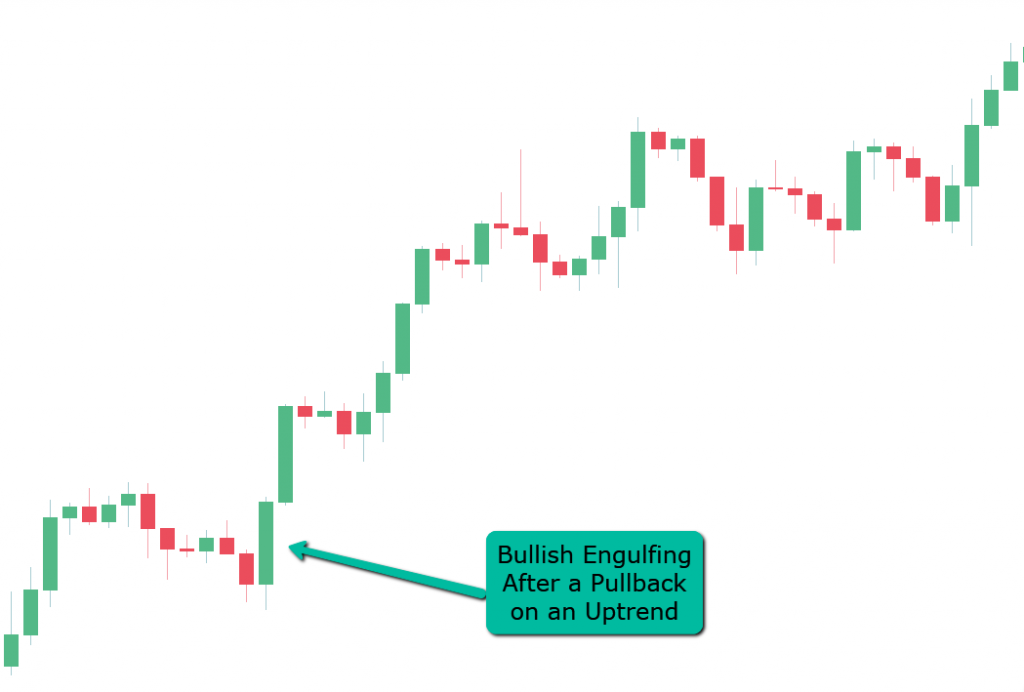
2 – Trend change / Exit trade
All trends change direction at some point.
A strong engulfing pattern against the trend can sign a potential trend change.
If you’re waiting for the next pullback to go long, be careful because you may be falling into a bull trap.
Remembers, following the market, is always following the strength of the candles.
When you spot these ones, you can do one or both of these options:
- Close your long trade if you have any open.
- Start trading in the opposite direction of the trend.
In this example, it would be a possible great place to open a short trade and/or close a long trade:
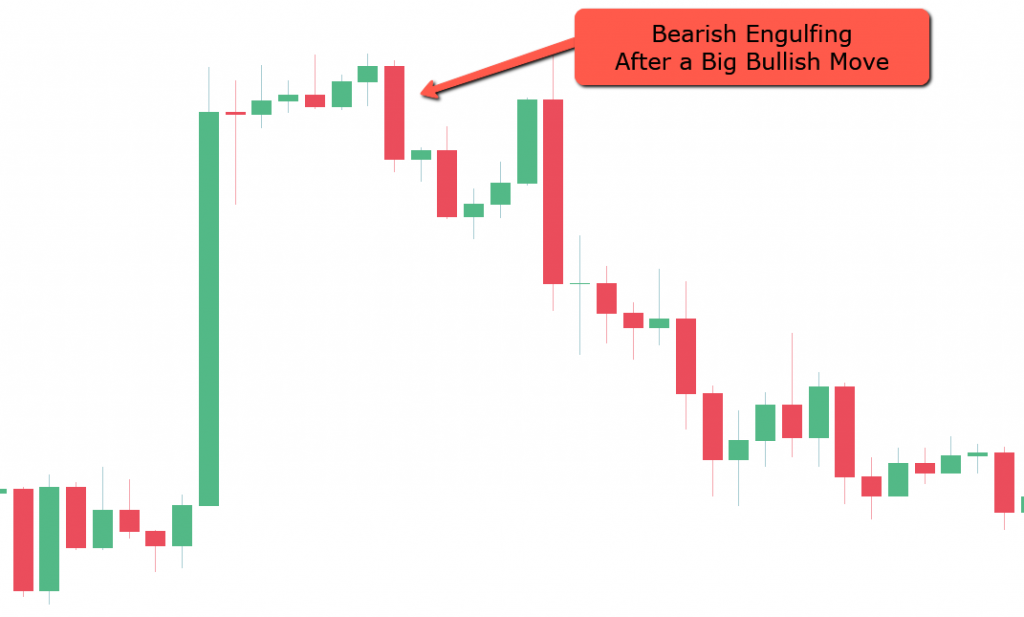
Mistakes trading engulfing patterns
Look…
Most traders see a bullish engulfing pattern and they just go long blindly.
Or a bearish engulfing pattern and shorting immediately.
If you want to take advantage of this powerful setup you need to wait for the right locations along with the current market structure.
So…
When should you avoid trading engulfing patterns?
1 – Going against steady trends
If the price is trending…
Let’s say, on a downtrend with an angle of around 45º.
It will likely keep going in that direction.
Every engulfing pattern that appears after a move to the downside will have a high chance of failure.
The price will tend to quickly get back to the original trend.
Look at this example on a downtrend:

2 – Trading engulfing patterns after parabolic moves
Parabolic moves attract all newbie traders using a lot of leverage.
They are not steady trends, like the ones at 45º.
If you see something going up like crazy you should enter that race, right?
Wrong…
What will happen is that you’ll most likely enter near the end of the up move.
It’s as if the price created a big building.
But it created it so fast, that the foundations and structure are not going to hold.
And at some point, the building is going to fall.
When you see an engulfing pattern at the top of an uptrend…
After a big move…
Just stay away from that.
You’ll get hurt most of the time.
Here’s an example:
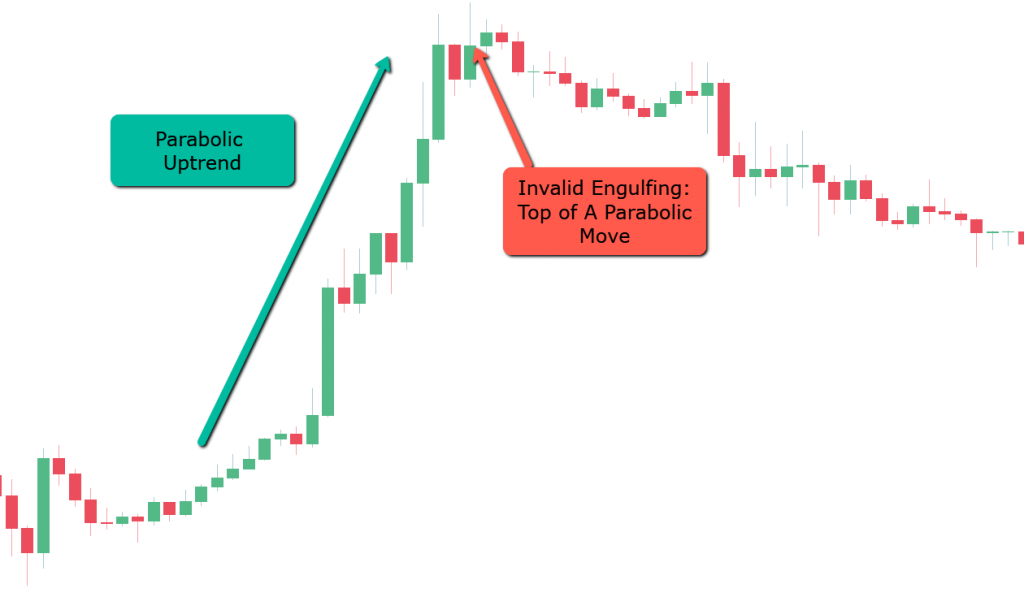
How to trade Engulfing bars (trigger)
Are you a conservative or aggressive trader?
Aggressive traders trade the engulfing pattern as soon as the previous candle is engulfed.
Conservative traders wait for the close of the engulfing candle.
And then, trade the break of the low/high.
Pros:
- Aggressive traders enter the trade sooner, they get into the profit zone sooner.
- Conservative traders enter the trade later, they need a bigger move to get into profit.
Cons:
- Aggressive traders may be stopped unnecessarily if the engulfing candle comes back up.
- Conservative traders wait for the confirmation of the engulfing pattern.
This is how they look in the charts:
Bearish engulfing pattern trigger

Bullish engulfing pattern trigger

Engulfing Pattern Trading Strategy
Now let’s look at how to trade engulfing patterns the right way.
These strategies are valid for day trading, scalping, or swing trading.
Every time you place a trade you need to consider all these parameters:
- Market structure
- Key zones
- Trigger
- Targets and stops
Here are different ways of trading engulfing patterns:
1 – Trading Engulfing Patterns using trendlines strategy
Market structure
Let’s identify the market structure.
The price is making consecutive lower highs and lower lows.
And this means…
Downtrend!
Next.
We draw a line passing through the first two highs and extend it to the right.
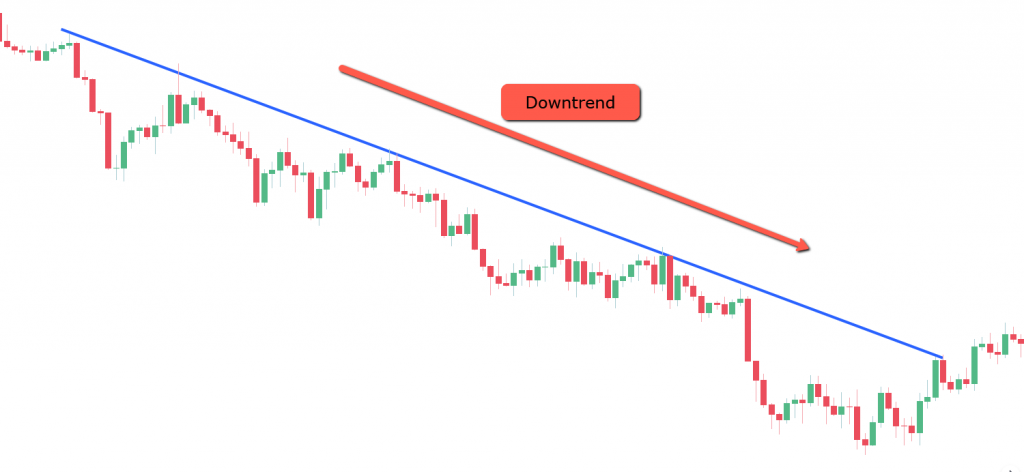
Key zones
Here is where we are going to wait for our engulfing pattern.
Our key zone?
The trendline.
A touch on the trendline is the location where we want to look for our short pattern.
Since we are on a downtrend we want to look for bearish engulfing patterns.
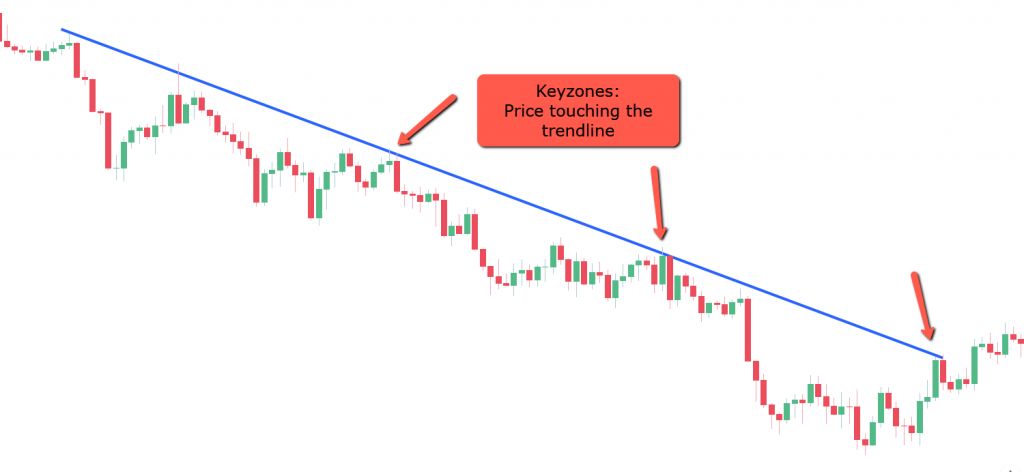
Trigger
We had three touches on the trendline.
But only two are bearish engulfing patterns.
Now we want the price to break the low of the pattern.
That’s our trigger to short the market.
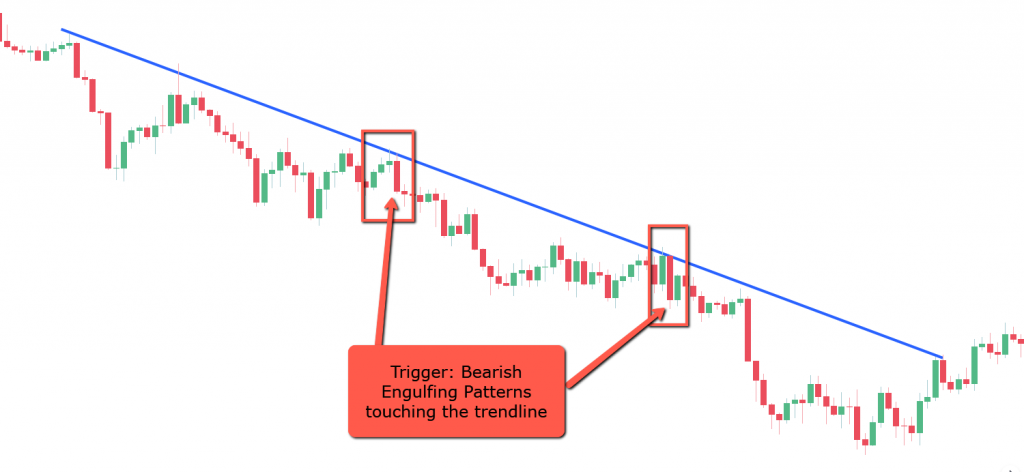
Targets and stops
Let’s protect ourselves.
We never know what the market is going to do.
First, place our stop loss.
Above the high of the bearish engulfing pattern is the most common way to do it.
Then we set our targets.
We don’t want to set small targets.
We want a decent risk-reward
Never risking more than the potential reward.
Our target should be after the break of the previous lows.
It can be set as a fixed number of pips/points.
Or it can be set by targeting other types of key zones, like supports and resistances.
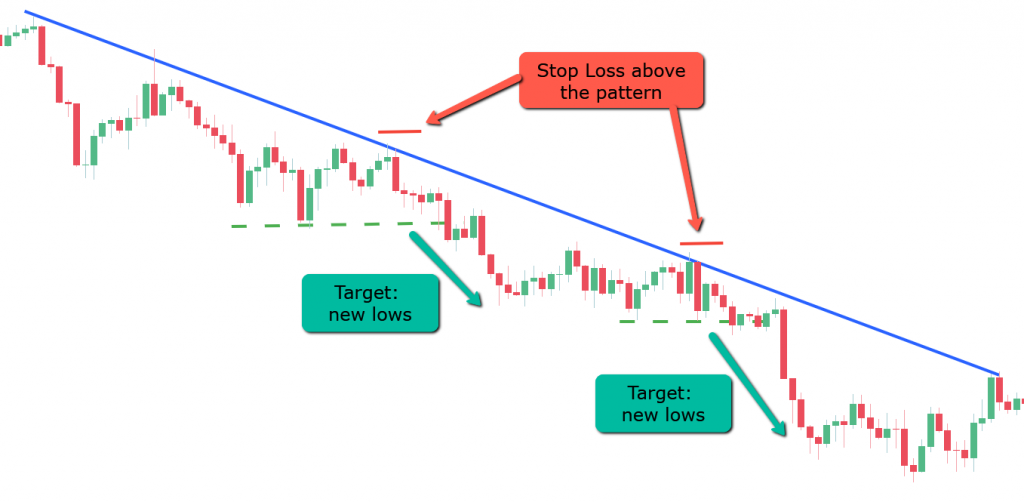
2 – Trading Engulfing Patterns using moving averages strategy
Market structure
First, we apply a moving average to our chart.
The period of the moving average should be chosen according to the one that the price is respecting.
The stronger the trend, the smaller should be the moving average period.
Popular moving averages are the ones with 8, 20, 50, and 200 periods.
In this case, we see that the price is on an uptrend.
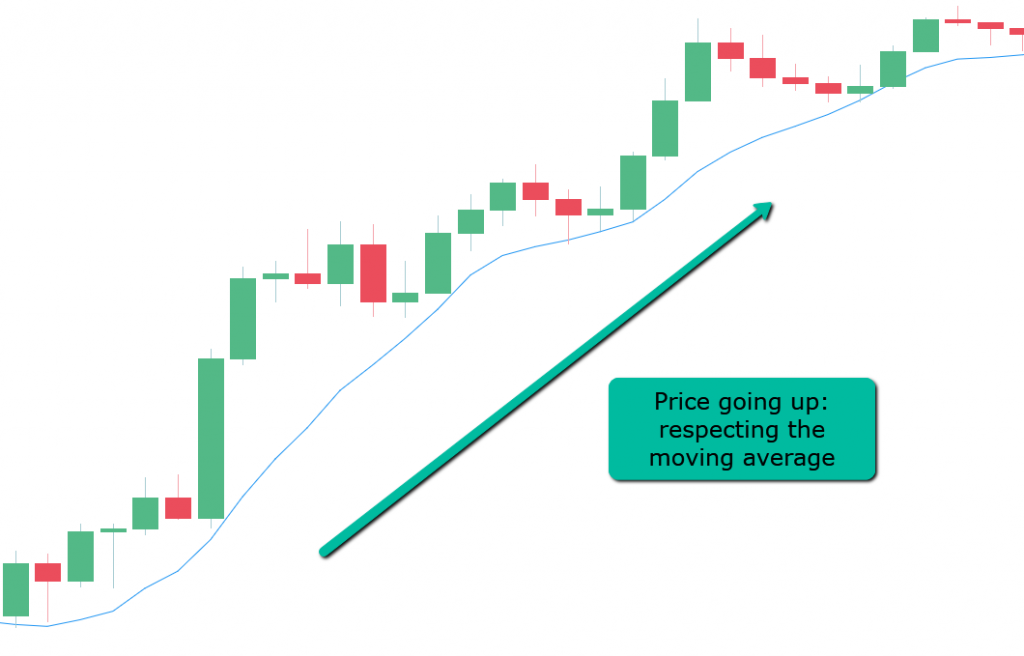
Key zones
The zones that we want to focus on are the ones where the price touches the moving average.
That’s where the price will tend to touch and come back to the original trend.
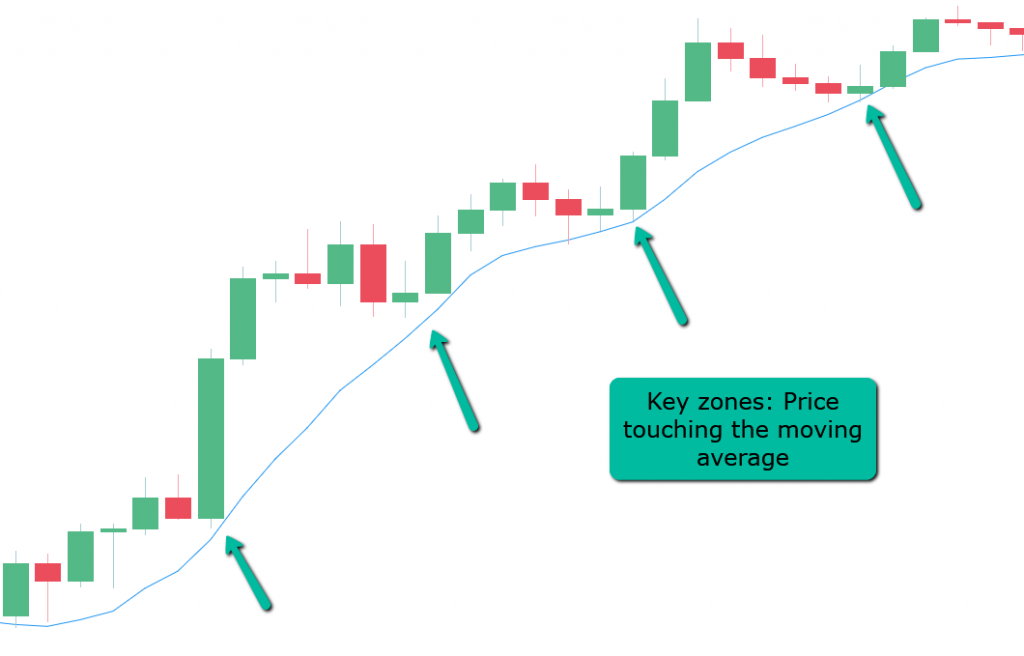
Trigger
Our trade will be confirmed when the engulfing pattern appears touching a key zone.
As we saw previously you can trade them aggressively or conservatively (waiting for confirmation).
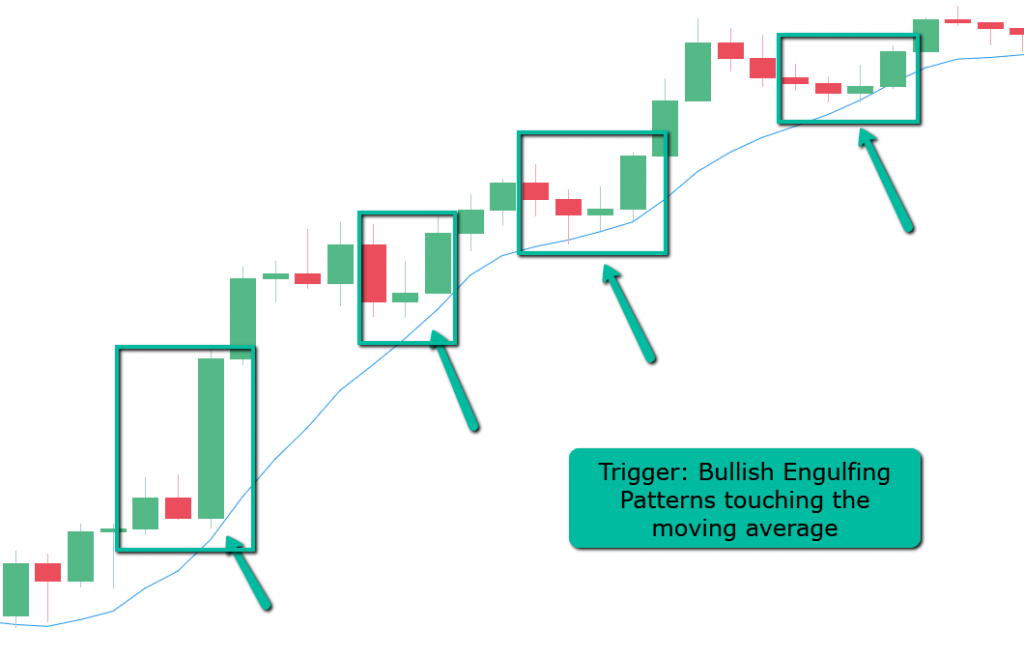
Targets and stops
To protect ourselves, the most common way is to put the stop loss under the bullish engulfing pattern.
And where do we close in profits?
Two options:
1 – Wait for a move after the breakout of the previous high and close when you have a decent risk/reward.
At least 1:1.
2 – Aim for a previous resistance where the price can revert the trend.
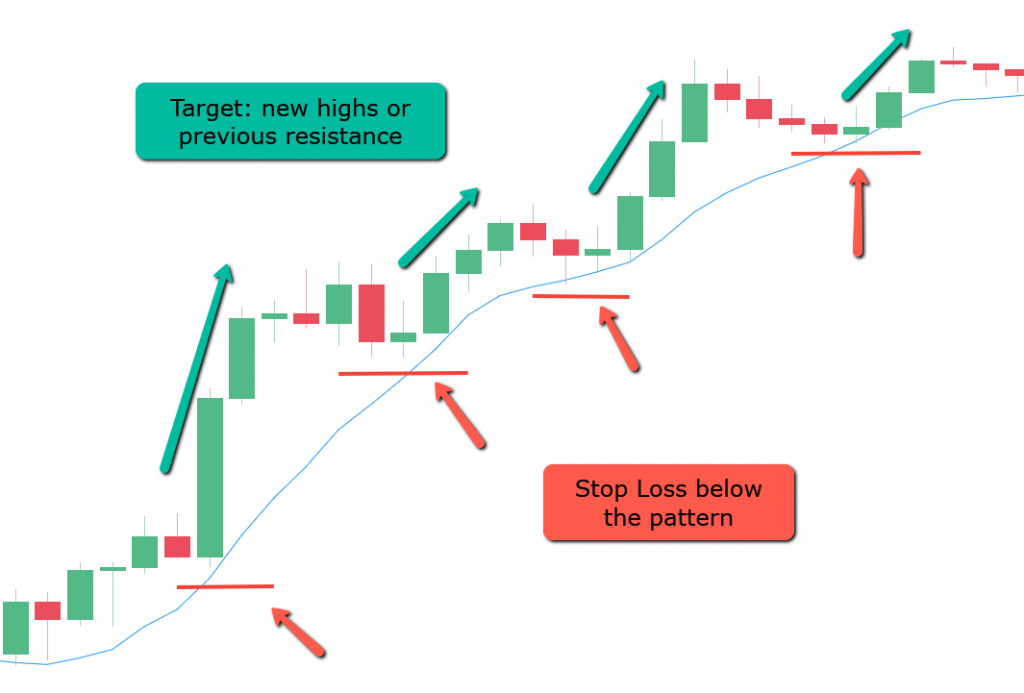
3 – Trading Engulfing Patterns using support and resistance strategy
The steps before placing a trade are exactly the same: market structure, key zone, trigger, and setting targets and stops.
Market structure
In this case example, we see that the market is moving sideways.
It’s jumping every time it hits a support line.
During a ranging sideways movement like this, using supports and resistances to trade is a good option.
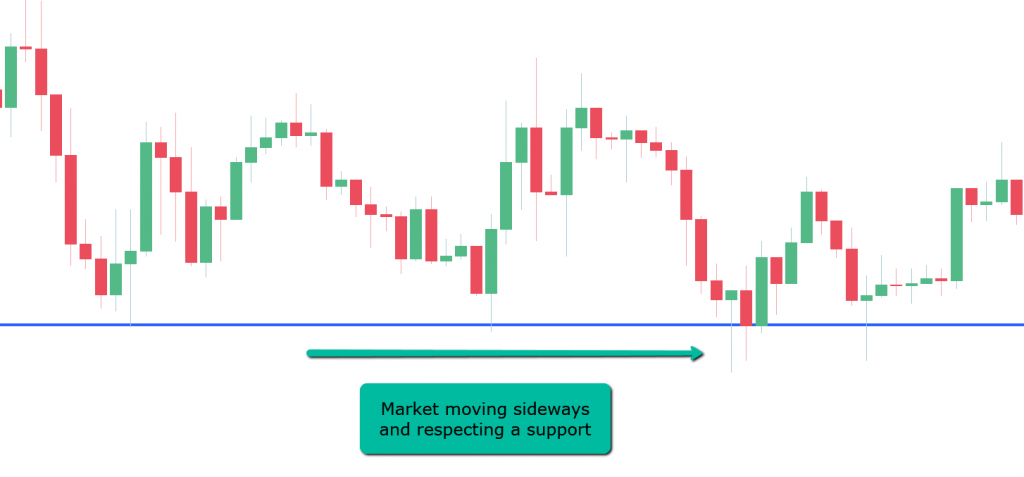
Key zones
We are trading at a support line.
So, what are we looking for?
Touches of the price in the support line.
We can spot these ones here:
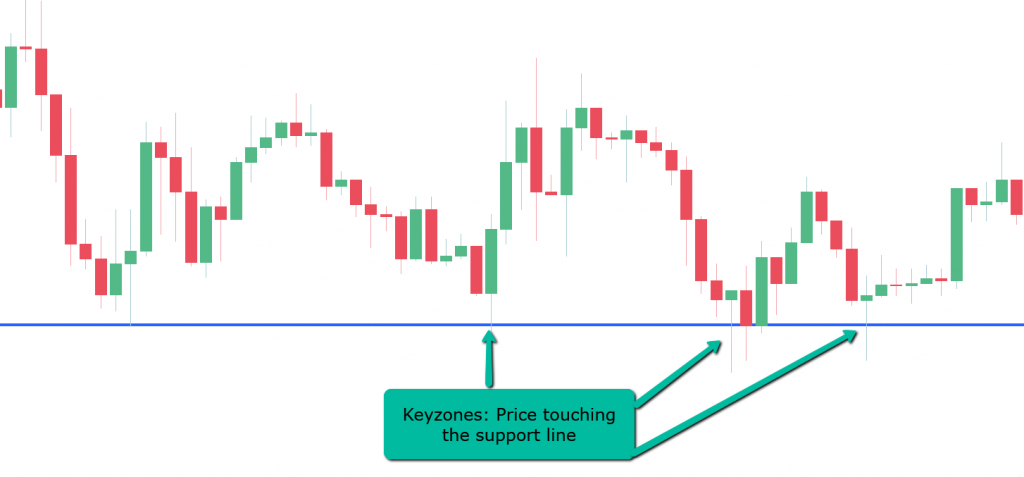
Trigger
When trading a support line we are waiting for a rejection from that support.
We want to go long while the price holds above the support.
So, that rejection should appear as a bullish engulfing pattern.
Here are the engulfing patterns that we found touching our key zone:
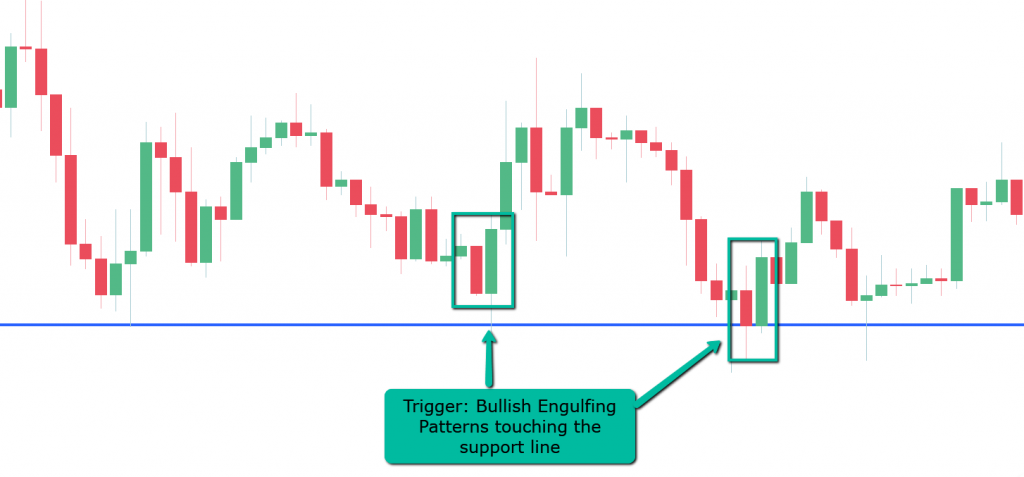
Targets and stops
Next…
We calculate the lot size, and then we just place our stop loss and target.
The stop loss goes to the other side of the engulfing pattern.
Our target can be a touch on the previous resistance.
Eventually, we can close our trade partially and let the remaining run, if it breaks the previous resistance.
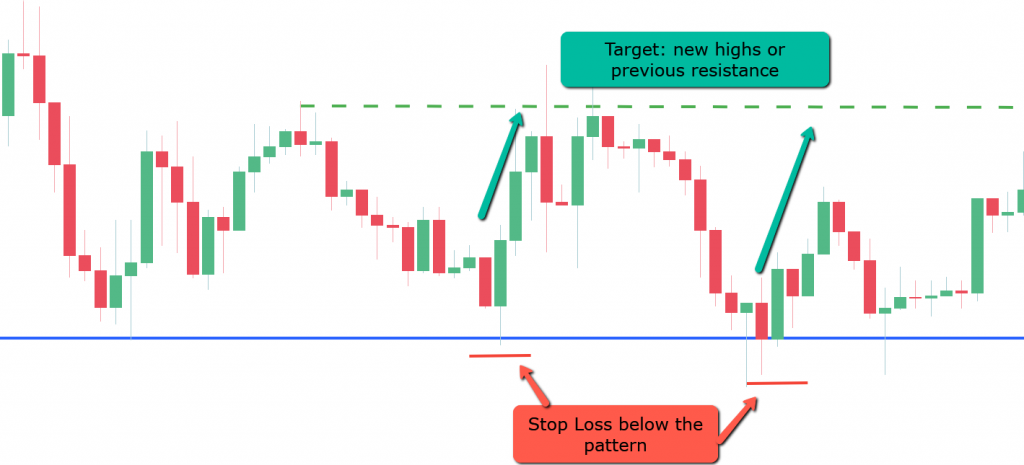
What Is The Success Rate Of The Engulfing Pattern?
According to the Encyclopedia of Candlestick Charts by Thomas N. Bulkowski (link), the Bullish Engulfing candlestick pattern has a success rate of 62% while the Bearish Engulfing candlestick pattern has a success rate of 82%.
Quick Recap:
Here’s what you learned today:
- A bearish engulfing pattern shows price strength to the downside, it’s a possible short opportunity.
- A bullish engulfing pattern shows price strength to the upside, it’s a possible long opportunity.
- Engulfing patterns are important and strong signals when they appear in the right location.
- You should avoid trading engulfing patterns against the trend or after price exhaustion.
- Engulfing patterns can be triggered in an aggressive or conservative way.
- You can trade engulfing patterns using trendlines, supports and resistances, and moving averages.
- The winning rate of the Bullish Engulfing pattern is 62%.
- The winning rate of the Bearish Engulfing pattern is 82%.
Now, you tell me…
How do you trade engulfing patterns and what is your favorite strategy?
Let me know your thoughts in the comments below!



I do trade the engulfing signals and I am aggressive cause I don’t wait for the candles to closed. If I see a signal in the higher time frame I’ll go down to the lower to take the trade.
Thank you for sharing Mike.